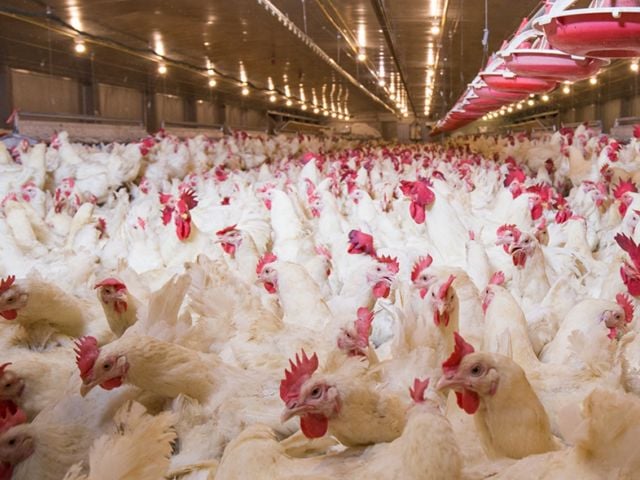
Hundreds of millions of conservation dollars in the federal farm bill should be used more effectively to address widespread water pollution problems in California, concludes a report released today by Environmental Working Group. Too much money is going to install micro-irrigation systems and build facilities to manage and treat the millions of tons of animal waste generated by dairies and cattle feedlots. Too little is going to support high-impact ecological farming practices such as cover cropping, nutrient management, filter strips and conservation tillage.
Fertilizer, pesticides and sediment that run off poorly-managed farm fields are damaging California's water resources, poisoning fish and threatening drinking water for many communities. Because of nutrient and pesticide pollution, more than 9,000 miles of the state's rivers and streams and 513,000 acres of lakes and reservoirs fail to meet minimum federal safety standards for swimming, aquatic life and drinking water
Citing costs and lack of resources, many farmers have been slow to respond to pressure from policy makers and regulators to curb agricultural pollution. EWG’s report finds that there would more money to address these issues if the USDA’s Natural Resources Conservation Service (NRCS) reduced its heavy investment in infrastructure and redirected more money to cost effective land management practices that minimize use of harmful pesticides and chemical fertilizers.
EWG analyzed two conservation programs administered by the Conservation Service – the Environmental Quality Incentives Program (EQIP) and the Agricultural Water Enhancement Program (AWEP). Together these programs provided $485 million in financial and technical support between 2009 and 2012 to help California farmers and ranchers reduce water pollution, build healthier soil, protect air quality, enhance wildlife habitat and improve water conservation. About 40 percent of EQIP’s funding and 25 percent of AWEP’s supported implementation of practices that will have a moderate to significant impact on reducing nutrient and pesticide pollution from farms and ranches.
EWG’s analysis of the spending data showed that more than 80 per cent of the funding for practices that address nutrient pollution helped pay for structures or equipment – including half for purchasing and installing irrigation equipment and another quarter for structures to manage and treat the millions of tons of animal waste generated by farms,
More efficient and well-designed irrigation systems can help reduce nutrient and pesticide pollution, but knowledge-based and vegetative practices – such as nutrient management, conservation tillage, cover cropping and filter strips – are even more effective, according to a key NRCS technical document. Yet EWG found that only 11 percent of conservation funding to combat nutrient pollution goes towards these kinds of practices. And just 2 percent of EQIP and AWEP funding overall is going directly to farmers to develop and implement nutrient and pest management plans that help reduce the use of fertilizer and pesticides.
Similarly, the report finds that the primary way that NRCS is tackling pesticide pollution is through installation of irrigation systems, which alone will not guarantee significant reductions. Micro-irrigation can help reduce pesticide runoff and leaching, but other practices – such as cover cropping, residue and tillage management, riparian buffers, field borders and filter strips that reduce soil erosion – are not only highly effective in reducing runoff but also generate other valuable ecological benefits. These are all part of advanced integrated pest management (IPM) systems that aim to reduce the use, impact and risk of pesticides. An approach that incorporates these kinds of practices will do the most to reduce pesticide pollution of surface water.
The EWG report questions the use of scarce conservation dollars to subsidize and increase the profitability of large animal feeding operations that cause serious harm to water and air resources, public health and animal welfare. From 2009 to 2012, EQIP and AWEP provided more than $48 million to build structures to manage and treat the millions of tons of waste generated by California dairies and cattle feedlots. Reducing these subsidies would level the playing field and increase the competitiveness and viability of more sustainable livestock operations that are needed to meet California’s growing consumer demand for grass-fed and antibiotic-free meat and dairy products.
Because EQIP and AWEP are voluntary programs, NRCS cannot force farmers to choose particular practices. According to NRCS staff, many farmers do not request funding for highly effective land management practices despite the staff’s efforts to promote them. It is clear that many farmers will not voluntarily choose to install them without stronger financial incentives or regulatory mandates. Thankfully, after years of negotiations with farmers, the State Water Resources Control Board is now taking action to impose such requirements through the Irrigated Lands Regulatory Program.
The EWG report makes a number of recommendations for ways that the NRCS California office could provide greater incentives to adopt high-impact management practices that would go a long way toward improving water quality and the long-term environmental performance of agriculture. It also recommends that NRCS reassess its extensive irrigation funding in the light of concerns that installation of micro-irrigation systems could contribute to rapid depletion of California’s groundwater.
The report also calls on Congress to restore the law that until 2002 barred subsidies for large animal feedlots to build animal waste management structures and facilities. An amendment to again cut these subsidies was introduced but defeated in the House farm bill that was debated in June.
Currently, 60 percent of farmers seeking funding to implement better conservation practices are turned away every year, and billions of dollars for conservation are expected to be cut in the next farm bill. It is critical that these programs reach more farmers and achieve greater results by investing more of their scarce resources in proven, lower cost, ecological measures that not only reduce water pollution and chemical use but also enhance soil and plant health, reduce greenhouse gas emissions, conserve water, promote biodiversity and help agriculture adapt to climate change.
Who can argue with that?


